In today’s digital age, having a strong online presence is crucial for the success of any business, including vacation businesses. With more and more people turning to the internet to research and book their vacations, it is essential that your website is not only visually appealing but also user-friendly and optimized for search engines. This is where a website audit comes in.
A website audit is a comprehensive evaluation of your website’s design, content, SEO, social media integration, mobile responsiveness, security measures, loading speed, and traffic analytics. By conducting a website audit, you can identify areas for improvement and growth, and take action to optimize your website for success.
Step 1: Assessing Your Website’s Design and User Experience
The design of your website plays a crucial role in attracting and retaining visitors. A visually appealing website can make a positive first impression and encourage users to explore further. On the other hand, a poorly designed website can turn visitors away and result in lost business.
When conducting a website audit, it is important to evaluate the overall design of your website. Is it visually appealing? Does it reflect your brand identity? Is the layout intuitive and easy to navigate? These are all questions you should ask yourself when assessing your website’s design.
In addition to design, user experience is another important factor to consider. Is your website easy to navigate? Can users find the information they are looking for quickly and easily? Are there any broken links or error messages? These are all aspects of user experience that should be evaluated during a website audit.
To improve your website’s design and user experience, consider making changes such as updating the layout to be more visually appealing, simplifying navigation menus, ensuring all links are working properly, and optimizing page load times.
Step 2: Evaluating Your Website’s Content and Messaging
High-quality content is essential for engaging visitors and encouraging them to take action, such as booking a vacation or contacting your business. During a website audit, it is important to assess the content on your website and ensure that it is informative, relevant, and well-written.
In addition to evaluating the quality of your content, it is also important to assess your website’s messaging and branding. Does your website effectively communicate your unique selling points and value proposition? Is your branding consistent across all pages of your website? These are important questions to consider when evaluating your website’s content and messaging.
To improve your website’s content and messaging, consider updating outdated information, adding more informative and engaging content, ensuring that your messaging is clear and concise, and aligning your branding across all pages of your website.
Step 3: Analyzing Your Website’s Search Engine Optimization (SEO)
Search engine optimization (SEO) is the process of optimizing your website to rank higher in search engine results pages. This is important because the higher your website ranks, the more likely it is to be seen by potential customers.
During a website audit, it is important to evaluate your website’s SEO. Are you using relevant keywords throughout your website? Are your meta descriptions compelling and informative? Are you utilizing header tags effectively? These are all aspects of SEO that should be assessed during a website audit.
To improve your website’s SEO, consider conducting keyword research to identify relevant keywords for your industry, optimizing meta descriptions with compelling calls-to-action, using header tags to structure your content effectively, and ensuring that your website is mobile-friendly.
Step 4: Reviewing Your Website’s Social Media Integration
Social media has become an integral part of our daily lives, and it can also play a significant role in the success of your vacation business. By integrating social media into your website, you can increase brand awareness, engage with customers, and drive traffic to your website.
During a website audit, it is important to assess how well your website integrates with social media. Are there social media icons prominently displayed on your website? Can visitors easily share your content on social media? Are you actively engaging with customers on social media platforms? These are all questions you should ask yourself when reviewing your website’s social media integration.
To improve your website’s social media integration, consider adding social media icons to prominent locations on your website, ensuring that visitors can easily share your content on social media platforms, and actively engaging with customers on social media by responding to comments and messages.
Step 5: Checking Your Website’s Mobile Responsiveness
With the increasing use of smartphones and tablets, it is essential that your website is mobile-friendly. A mobile-friendly website not only provides a better user experience for mobile users but also improves your website’s SEO.
During a website audit, it is important to evaluate your website’s mobile responsiveness. Does your website display properly on different screen sizes? Is the text readable without zooming in? Are the buttons and links easy to tap? These are all aspects of mobile responsiveness that should be assessed during a website audit.
To improve your website’s mobile responsiveness, consider using responsive design techniques to ensure that your website displays properly on all screen sizes, optimizing images and videos for faster loading times on mobile devices, and making sure that buttons and links are large enough to be easily tapped.
Step 6: Examining Your Website’s Security and Privacy Measures
Website security and privacy are of utmost importance, especially when it comes to handling sensitive customer information such as credit card details. A secure and privacy-focused website not only protects your customers but also builds trust and credibility for your vacation business.
During a website audit, it is important to assess the security and privacy measures in place on your website. Do you have an SSL certificate installed? Are you using secure payment gateways? Do you have a privacy policy in place? These are all aspects of website security and privacy that should be examined during a website audit.
To improve your website’s security and privacy measures, consider installing an SSL certificate to encrypt data transmitted between your website and users, using secure payment gateways to protect customer payment information, and creating a privacy policy that outlines how you handle customer data.
Step 7: Testing Your Website’s Loading Speed
Website loading speed is another important factor to consider when conducting a website audit. A slow-loading website can frustrate visitors and result in high bounce rates, meaning that visitors leave your website without taking any action.
During a website audit, it is important to evaluate your website’s loading speed. Is your website loading quickly? Are there any elements that are slowing down the loading speed? Are you utilizing caching techniques to improve loading times? These are all questions you should ask yourself when testing your website’s loading speed.
To improve your website’s loading speed, consider optimizing images and videos for faster loading times, minifying CSS and JavaScript files to reduce file sizes, utilizing browser caching to store static files locally on visitors’ devices, and using a content delivery network (CDN) to distribute your website’s content across multiple servers.
Step 8: Measuring Your Website’s Traffic and Analytics
Website traffic and analytics provide valuable insights into the performance of your website. By analyzing this data, you can identify trends, understand visitor behavior, and make informed decisions to improve your website’s performance.
During a website audit, it is important to assess your website’s traffic and analytics. How much traffic is your website receiving? Where is the traffic coming from? Which pages are visitors spending the most time on? These are all questions you should ask yourself when measuring your website’s traffic and analytics.
To improve your website’s traffic and analytics, consider setting up Google Analytics or another analytics tool to track and analyze your website’s performance, regularly review your analytics data to identify trends and patterns, and use this data to make informed decisions to improve your website’s performance.
Step 9: Identifying Opportunities for Improvement and Growth
The ultimate goal of a website audit is to identify areas for improvement and growth. By analyzing the results of your website audit, you can determine what changes and improvements need to be made to optimize your website for success.
During a website audit, it is important to analyze the results and identify opportunities for improvement and growth. Are there any areas of your website that are underperforming? Are there any missed opportunities for engagement or conversion? These are all questions you should ask yourself when identifying opportunities for improvement and growth.
To implement changes and improvements, consider creating a prioritized action plan based on the results of your website audit, setting specific goals and objectives for each area of improvement, and regularly monitoring and evaluating the impact of these changes on your website’s performance.
Taking Action to Optimize Your Vacation Website for Success
In conclusion, conducting a website audit is essential for the success of your vacation business. By assessing your website’s design, content, SEO, social media integration, mobile responsiveness, security measures, loading speed, and traffic analytics, you can identify areas for improvement and growth, and take action to optimize your website for success.
Remember that a visually appealing website with a great user experience is crucial for attracting and retaining visitors. High-quality content that effectively communicates your messaging and branding is essential for engaging visitors and encouraging them to take action. SEO optimization helps drive traffic to your website, while social media integration increases brand awareness and engagement. Mobile responsiveness ensures that your website displays properly on all devices, while security measures protect customer information. Fast loading speeds improve user experience, while traffic analytics provide valuable insights into your website’s performance.
By conducting a comprehensive website audit and taking action to implement changes and improvements, you can optimize your vacation website for success and stay ahead of the competition. So don’t wait, start conducting a website audit today and take your vacation business to new heights.






